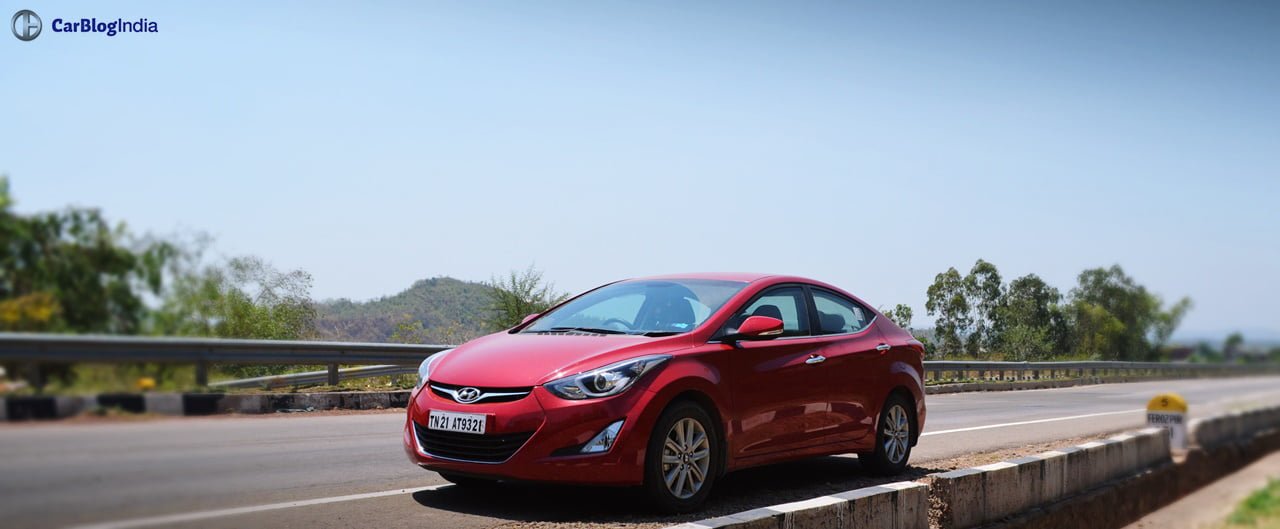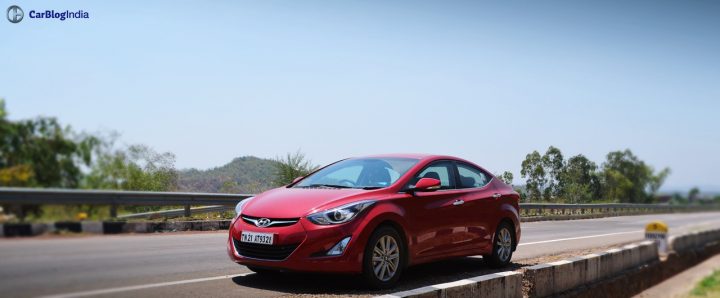Epilogue
The Hyundai Elantra needs no introduction. First launched in South Korea in 1990, this three-box sedan is now in its fifth generation, and has been on sale in many parts of the world. The third generation of the Elantra made it to Indian car market in 2004, and even though it met with only moderate success, it continued to lock horns with the likes of Skoda Octavia and Toyota Corolla till 2010. Shortly thereafter, HMIL brought the fifth (current) generation model to our shores, and the new car has been on sale under the ‘Neo Fluidic’ moniker. In April this year, Hyundai’s Indian subsidiary launched the updated 2015 Elantra in our country’s car market. The 2015 Elantra carries a handful of visual updates, and boasts of a longer list of features. The Hyundai Elantra, equipped with a potent motor, many new features, and a really voguish exterior design, comes across as quite a value for money proposition. Bothered by the fast soaring temperatures, we recently borrowed a 2015 Elantra Diesel from the good chaps at Hyundai and drove the stylish sedan to the picturesque Himachal Pradesh. As we drove for a thousand kilometres in search of some respite from the scorching heat, the Elantra turned out to be the perfect companion for our impromptu road trip, and impressed us with its world-class engine, comfortable cabin, and a gazillion features. Check out our 2015 Hyundai Elantra India review to find out all we feel about this car’s Design, Comfort levels, Engine Performance, and Ride and Handling.
Design
Designed at Hyundai’s North American Design Center in Irvine, Calif, the current generation Elantra is a clever demonstration of the manufacturer’s much publicized “Fluidic Sculpture” design language. The talking point of the car’s front-end design is the signature hexagonal front grille and the very stylish swept-back headlamps. The headlamps, which are smartly detailed, carry LED fixtures that serve as guiding lamps. In its side profile, the Elantra mirrors the Sonata’s flowing lines. However, it is a bold feature line that starts at the front door which accentuates the athleticism of the design. All the lines, along with the bold wheel arches, and a coupe-like roofline, infuse enough sportiness with the car. At the rear-end, the Elantra gets sleek wraparound LED taillamps, and a rather chunky bumper.
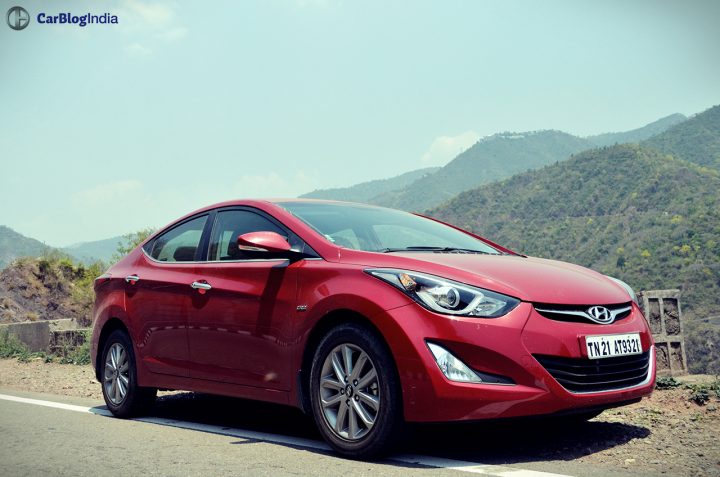
For the facelift, the Elantra has been given a minor nip and tuck at its front and rear end. Thanks to a host of small styling changes, the Elantra’s design now looks more balanced, and a touch more sophisticate. At the front-end, the Elantra facelift features a new bumper, a slightly revised grille, new fog lamps, and new projector headlights that come with stylish LED accents. The new L-shaped foglight housings, together with the revised bumper, manage to provide some more stability to the front-end design, and when viewed front on, the car looks a tad more grounded. This treatment has also ensured that the car looks a touch wider, and a bit more planted than the pre-facelift. Side profile remains largely unchanged, with the changes being restricted to addition of chrome on the door handles, and a set of new design 10-spoke alloy wheels. At the rear-end, the car gets slightly revised LED effect taillights, an updated bumper and a sporty chrome-tipped exhaust.
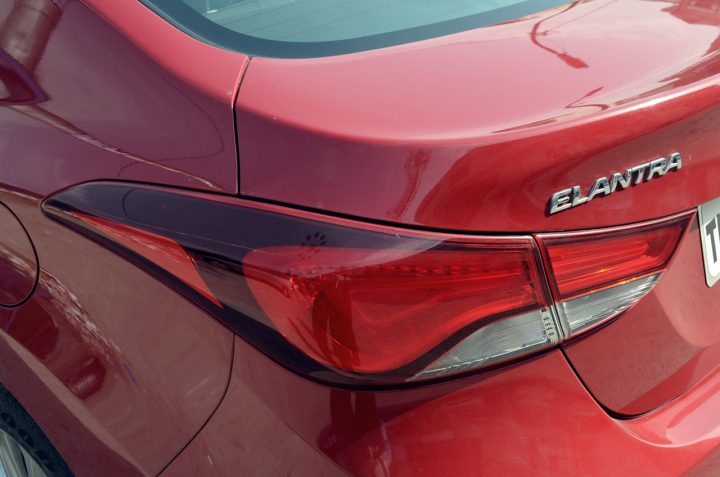
Akin to the exterior, the interior of the car too gets some updates for the 2015 model. The highlight of these changes is an all-black theme (vs black-beige on pre-facelift) for the panels and upholstery, which definitely makes the cabin look sportier. Also new are the metallic door sill plates, and aluminium pedals.
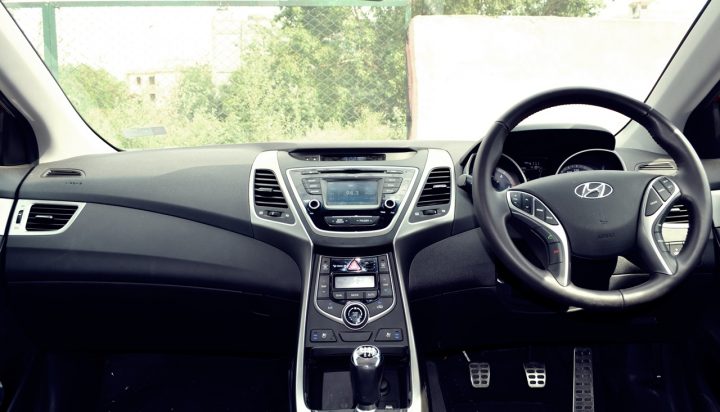
Features
Hyundai has always made it a point to equip its cars with a gazillion creature comforts, and the new 2015 Elantra is no different in this aspect. This Korean mid-size sedan comes with a host of premium features, which include –
- Auto headlamps
- Cruise Control
- Push-button start with smart key
- 4.3-inch TFT LCD touchscreen audio system
- 10-way adjustable power driver seat
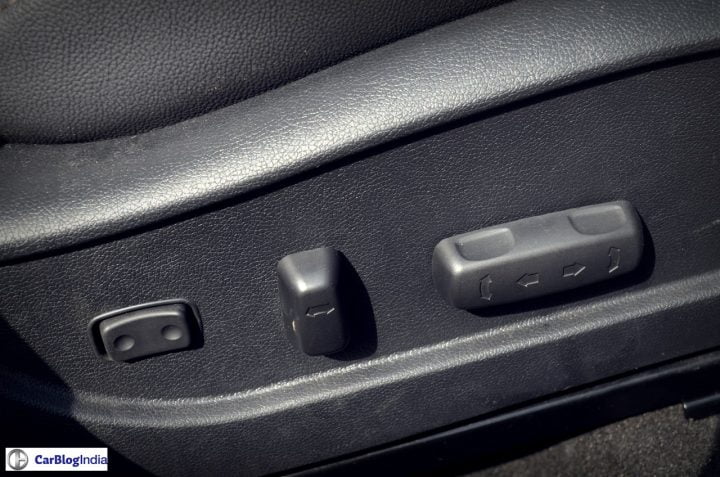
Safety features on offer include –
- Six airbags
- Vehicle stability management
- ESP
- ABS with EBD
- Hill Assist Control
Video Review
Engine and Transmission
The Elantra is available in both petrol and diesel engine variants. The petrol powered model boasts of a 1.8-litre Dual VTVT engine that pumps out a maximum power of 149.5 PS and a peak torque of 177.5 Nm. The oil burner on duty is a 1.6-litre CRDI unit that offers 128 PS – 260 Nm. Both the motors can be ordered with either a 6-speed manual or a 6-speed automatic gearbox. Our test mule came equipped with a diesel heart that was mated to the manual transmission. While you’ll miss the outright grunt of its more powerful (read: 2.0-litre engine-d) rivals, the Elantra’s motor is far from being a lethargic performer. The refinement levels are rather impressive, with the typical diesel clatter being almost conspicuous by its absence. The turbo-lag is minimal and the engine starts feeling energetic at as early as 1600 rpm. The sweet-spot, though, lies between 2,000-4,000 rpm, and it is here when the Elantra D charges forward almost ferociously. You can cruise at triple digit speeds all day long, and flirting with the 200 km/h mark on the speedo isn’t really a Herculean task. However, the Elantra does lack the urgency of, say, a Chevrolet Cruze. The gearbox provides slick shifts and the clutch action is light.
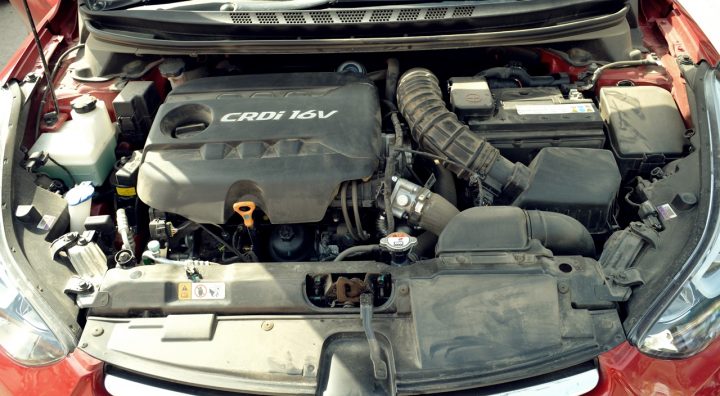
Fuel Mileage
The 2015 Elantra diesel boasts of an ARAI-claimed fuel mileage of 22.7 km/l for the manual transmission variant and 19.11 km/l for the automatic transmission model. During our drive, which comprised of some stop-go traffic, high speed highway cruising, and some spirited driving on the hills, the Elantra 1.6 MT managed to return around 15.7 km/l.
Ride, Handling and Braking
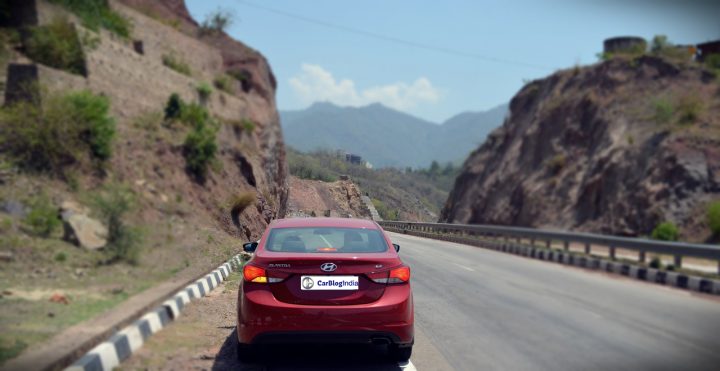
Hyundai has got it almost right with striking a balance between Elantra’s road handling and ride quality. True, this car’s handling prowess is no way in the league of rivals like the Skoda Octavia, but one needs to acknowledge that the Elantra’s road handling manners are several notches above what we’ve seen in some other Hyundai models. The steering, which, like almost all other EPS units, is on the lighter side and doesn’t provide much in terms of feel. However, the car does feel planted till 130-140 km/h, and it is only above the aforementioned speeds that the Elantra starts losing stability at an almost alarming rate. Accelerate past 130-140 km/h and the car goes all wobbly, with the rear almost threatening to lose composure. However, for an average family man who would never play a boy racer, the Elantra’s road handling characteristics won’t leave much to be desired. Like most new Hyundai models, the Elantra exhibits a decent ride quality. At low to average speeds, the suspension soaks in most of the bumps and craters with ease, and only the sharp irregularities threaten to unsettle the car. The Elantra comes with disc brakes on all four wheels. While the braking package is sufficiently potent to quickly haul down this sedan from high speeds, the brakes do feel a bit spongy.
Prologue
Good ride quality, a long list of features, an efficient motor, and a flashy design – the 2015 Hyundai Elantra definitely has a lot going for it. True, on a winding road, this Korean sedan can’t really hold a candle to its European rivals. Also, the Elantra’s design might be a tad too loud for some. But at roughly INR 17 lakhs (ex-showroom), the top of the line 2015 Hyundai Elantra diesel is a lot of car for your money. Look no further if you’ve been in market for a stylish, feature-laden and a comfortable D-segment sedan.
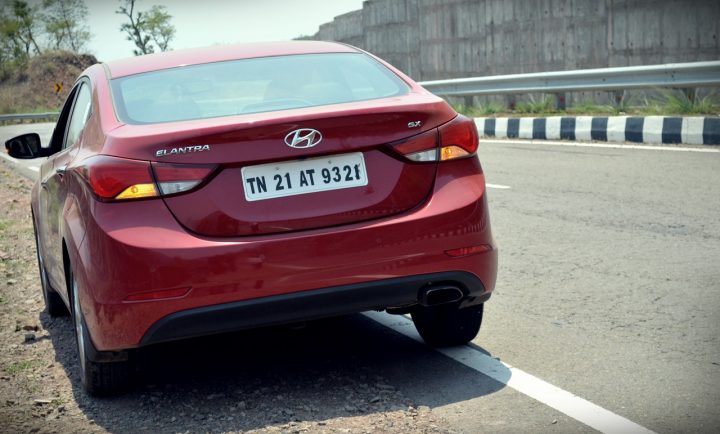
Stay tuned to Car Blog India for more auto news and reviews. Also, what do you have to say about our 2015 Hyundai Elantra India review? Let us know by penning down your thoughts in the comments section below.


